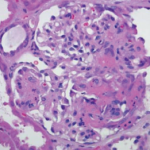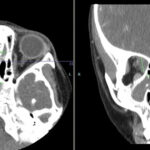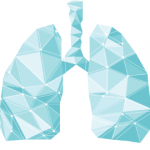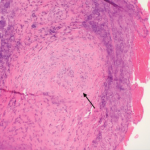During that time, however, the disease was striking back. Besides losing half her sight, she was also hospitalized for transitory ischemic attacks.
“When diagnosed, I actually felt relief,” Ms. Abbott says, adding that she’s grateful the strokes didn’t kill her. “You think you’re going crazy, seeing dozens of doctors, and nobody can tell you what’s going on.”
She was prescribed CellCept and steroids to suppress her immune system and reduce inflammation, although her body couldn’t tolerate the steroids.
“The meds made me very sick,” she says, adding that she was 48 years old by then. “I couldn’t even sit in a chair… Every time I started feeling better, I took a higher dose.”
Still, Ms. Abbott is not the type to complain or seek pity, adds Kathy Koser, Ms. Abbott’s former boss who retired two years ago as associate dean of the College of Health and Human Development at California State University, Fullerton.
“The worse things happen to her, the stronger she gets,” says Ms. Koser, adding that Ms. Abbott’s favorite saying is by poet Vivian Greene: “Life isn’t about waiting for the storm to pass. It’s about learning to dance in the rain.”
Ms. Koser says Ms. Abbott is also a very private person and rarely mentions her disease to anyone, including students taking her personal health classes.
“Primarily, she teaches taking responsibility for your own health, how to live a better life, not just physically, but mentally, socially, emotionally,” says Ms. Koser. “She’s one of a kind—an unbelievable role model.”
Moving Up & Forward
Several months before her diagnosis, Ms. Abbott and her husband, Larry, also an active mountain climber, had planned on climbing Mt. Aconcagua, a mere 22,800-foot-high mountain in Argentina, in preparation for later climbing Mt. Everest. The couple had already booked their guide, climb and flight. Ms. Abbott was determined to let nothing—not even a rare disease or her doctors’ advice—stand in her way.
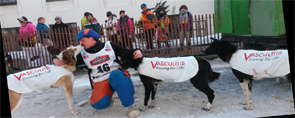
Ms. Abbott with her dog team at the start of the 2014 Iditarod.
Her rheumatologists didn’t know if the disease would flare up, leaving her stranded and possibly abandoned to die at 22,000 feet. They desperately tried to persuade her not to go.
“The doctors kept saying, ‘We don’t know what will happen at high altitudes,’” she says, explaining that high elevations could seriously affect her cardiovascular system. “My doctors were really unhappy because I wasn’t going to change my schedule. It became mind over matter.”
